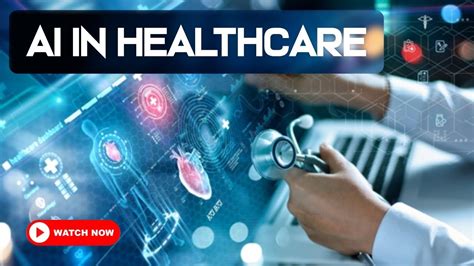The healthcare industry has witnessed a significant transformation in recent years, driven by advances in technology and the growing need for more efficient, patient-centered care. Ambulatory technology solutions have emerged as a key driver of this revolution, enabling healthcare providers to deliver high-quality care outside of traditional hospital settings. In this article, we will explore the rise of ambulatory tech solutions, their benefits, and the impact they are having on the healthcare industry.
What are Ambulatory Tech Solutions?
Ambulatory tech solutions refer to the use of technology to provide medical care and services outside of hospitals and clinics. These solutions encompass a range of technologies, including mobile health (mHealth) apps, telemedicine platforms, remote monitoring devices, and electronic health records (EHRs). Ambulatory tech solutions are designed to enable healthcare providers to deliver care more efficiently, effectively, and conveniently, while also improving patient outcomes and experiences.

Benefits of Ambulatory Tech Solutions
The benefits of ambulatory tech solutions are numerous and far-reaching. Some of the most significant advantages include:
- Improved patient outcomes: Ambulatory tech solutions enable healthcare providers to monitor patients remotely, detect potential health issues earlier, and intervene more effectively.
- Enhanced patient engagement: Ambulatory tech solutions empower patients to take a more active role in their care, improving health literacy, and promoting better health behaviors.
- Increased efficiency: Ambulatory tech solutions streamline clinical workflows, reduce administrative burdens, and enable healthcare providers to deliver care more efficiently.
- Cost savings: Ambulatory tech solutions can reduce healthcare costs by minimizing unnecessary hospitalizations, reducing readmissions, and improving resource allocation.
Key Components of Ambulatory Tech Solutions
Ambulatory tech solutions typically consist of several key components, including:
Mobile Health (mHealth) Apps
mHealth apps are software applications that run on mobile devices, enabling patients to track their health, monitor their conditions, and communicate with healthcare providers. mHealth apps can be used to manage chronic conditions, such as diabetes, asthma, and heart failure.

Telemedicine Platforms
Telemedicine platforms enable healthcare providers to deliver care remotely, using video conferencing, phone calls, or messaging apps. Telemedicine platforms can be used to provide virtual consultations, monitor patients remotely, and deliver care to patients in rural or underserved areas.

Remote Monitoring Devices
Remote monitoring devices are wearable or implantable devices that track patients' vital signs, health metrics, or medical conditions. Remote monitoring devices can be used to monitor patients with chronic conditions, such as heart failure, chronic obstructive pulmonary disease (COPD), or diabetes.

Implementation Strategies for Ambulatory Tech Solutions
Implementing ambulatory tech solutions requires careful planning, strategic thinking, and a deep understanding of the healthcare ecosystem. Some effective implementation strategies include:
Conducting Needs Assessments
Conducting needs assessments helps healthcare providers identify the specific needs of their patients, clinicians, and organizations. This information can be used to inform the selection of ambulatory tech solutions.
Developing Change Management Plans
Developing change management plans enables healthcare providers to prepare for the cultural, operational, and technological changes associated with implementing ambulatory tech solutions.
Providing Training and Support
Providing training and support is essential for ensuring that clinicians and patients are comfortable using ambulatory tech solutions.
Future Directions for Ambulatory Tech Solutions
The future of ambulatory tech solutions is promising, with several emerging trends and technologies on the horizon. Some of the most significant future directions include:
Artificial Intelligence (AI) and Machine Learning (ML)
AI and ML will play an increasingly important role in ambulatory tech solutions, enabling healthcare providers to analyze large datasets, identify patterns, and make more informed decisions.
Internet of Things (IoT) Devices
IoT devices will become more prevalent in ambulatory care, enabling healthcare providers to track patients' health metrics, monitor medical conditions, and deliver care more effectively.
Virtual and Augmented Reality (VR/AR)
VR/AR technologies will be used to create immersive experiences for patients, enhancing their engagement, education, and outcomes.






What are the benefits of ambulatory tech solutions?
+Ambulatory tech solutions offer several benefits, including improved patient outcomes, enhanced patient engagement, increased efficiency, and cost savings.
What are some examples of ambulatory tech solutions?
+Examples of ambulatory tech solutions include mobile health (mHealth) apps, telemedicine platforms, remote monitoring devices, and electronic health records (EHRs).
How can healthcare providers implement ambulatory tech solutions effectively?
+Healthcare providers can implement ambulatory tech solutions effectively by conducting needs assessments, developing change management plans, and providing training and support.
As the healthcare industry continues to evolve, ambulatory tech solutions will play an increasingly important role in delivering high-quality, patient-centered care. By understanding the benefits, components, and implementation strategies of ambulatory tech solutions, healthcare providers can revolutionize the way they deliver care, improving outcomes, engagement, and efficiency.
